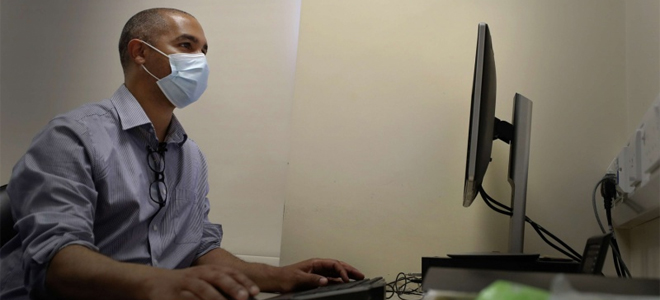
New research investigating novel ways to improve focus in sleep-deprived individuals has found a device that non-invasively sends electrical stimulation through the neck can boost alertness and reduce fatigue in subjects kept awake for up to 34 hours. The vagus nerve is a long nerve running from the brain down through the neck and into the abdomen. Electrically stimulating the vagus nerve has been a hot area of research in recent years with scientists exploring ways this nerve can influence everything from appetite to pain sensations.
A few years ago a device called gammaCore was initially approved for use in the United States to treat cluster headaches and migraine pain. The small hand-held device was designed to be placed on the neck and deliver mild electrical stimulation to the vagus nerve.
This new research looked at whether this kind of vagus nerve stimulation device could improve alertness by modulating activity in a brain region called the locus coeruleus, which plays a primary role in regulating attention and wakefulness. The vagus nerve has been found to have significant connections to the locus coeruleus so the hypothesis was this small device could improve cognitive performance in sleep-deprived subjects.
With the help of the US Air Force, 40 active-duty personnel were recruited for the study. Half the cohort was placed in a control group receiving sham stimulation, while the other half received an active intervention.
The experiment involved the participants staying awake for 34 hours. At the 12-hour mark of the study, the active intervention participants received a short six-minute burst of electrical current into their neck from the gammaCore device, while the control group received a sham intervention from a dummy device. Cognitive tests were performed at nine different points during the 34-hour experiment.
The results revealed those subjects receiving the real stimulation reported less fatigue and performed better on focus and multitasking tests compared to those receiving the sham. One multitasking measure recorded at the 24-hour point in the study found performance in those stimulated subjects had dropped only 5 percent from baseline, whereas those in the sham group had dropped by 15 percent.
As a proof of concept study, the results are undeniably compelling. However, the researchers are clearly much more work is needed before this kind of intervention can be deployed in real-world settings. Understanding exactly how to “dose” this kind of electrical stimulation will be required before one can think of replacing their morning coffee with a bit of vagus nerve stimulation.
New atlas

